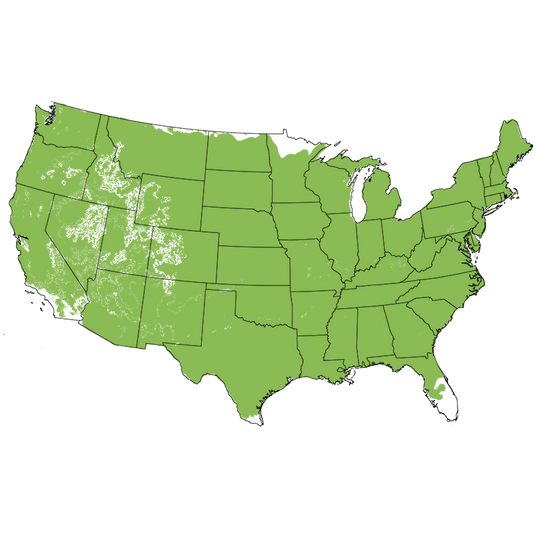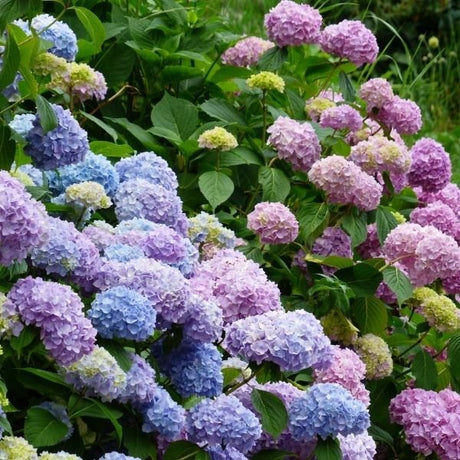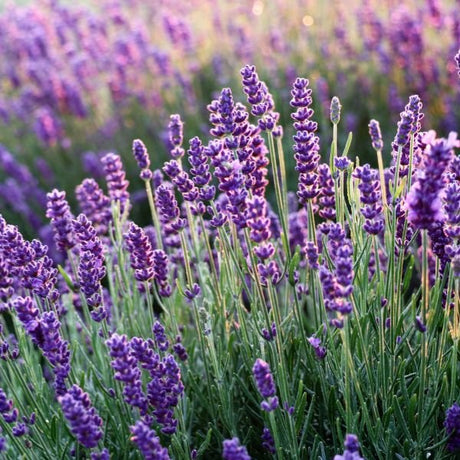Braeburn Apple Tree
- Stay Protected with Plant Sentry ™
Braeburn Apple Tree - #2 Container 3-4 Feet Semi Dwarf is backordered and will ship as soon as it is back in stock.
Plant Sentry™
Plant Sentry™
Plant Sentry is designed to protect both consumers and the nursery trade from invasive plant pests and diseases. Sites that display the Plant Sentry protection badge are protected from consumers buying and nurseries shipping material carrying invasive pests and diseases.
This proprietary eCommerce software prevents the shipment of a restricted plant to each state. The Plant Sentry system includes a shipment certification program. The Plant Sentry Compliance Officer works closely with NatureHills.com and each nursery or fulfillment center to ensure only compliant plants are sold to customers.
Click Here to learn more

Delivery and Shipping
Delivery and Shipping
Shipping
To obtain a more accurate shipment time-frame, simply enter your zip code in the “Find Your Growing Zone” box to the right. Our plants are grown all over the country and lead time on items may be different because of this. Once your order is placed, you will also receive the specific shipment time-frame information as part of your order confirmation. Once an item ships, you will receive shipment notification and tracking numbers, so you can follow along while your plant travels to your doorstep. We use FedEx, UPS, or USPS at our discretion.
Due to winter weather we have put a hold on shipping to the areas shown below in grey. You can still order now and we will ship the plant to you during an appropriate time for your zone.
Standard Shipping Rates
At Nature Hills we handle, package and ship the products you order with the utmost care to ensure healthy delivery. Shipping and handling charges are calculated based on the tables below. Please note that some items include an additional handling surcharge, these will be noted on the item's product page.
| From | To | S&H |
|---|---|---|
| $0 | $19.99 | $24.99 |
| $20 | $49.99 | $29.99 |
| $50 | $69.99 | $34.99 |
| $70 | $99.99 | $39.99 |
| $100 | $129.99 | $44.99 |
| $130 | $149.99 | $48.99 |
| $150 | $150+ | Approx 28% |
Click here to see our full rates
Buying Options for Plants
Nature Hills sells a large variety of plants with several options available. Plants are offered in both potted containers and as dormant bare root without soil. Here is a helpful resource to understand your options as you create a beautiful landscape with help from Nature Hills.
Ever wonder what a larger plant will mean for your landscape? Container Sizes are really all about the age of the plant!
Seasonally, Nature Hills offers hand selected, high quality bare root trees, shrubs and perennials. Bare root plants are sold by height from the top of the root system to the top of the plant. Plants may be taller than the height minimums.
- Popular sizes of select trees are 1 foot, 2 feet, 3 feet, etc.
- Popular sizes of select bare root plants is 1 foot, 18 inches, etc.
Nature Hills Container Size by Volume
Keep in mind, specific varieties and different growing conditions can affect the rate at which plants grow. Variations in size may occur.
| Young Plants to 18 Months | ||
|---|---|---|
| Size | Volume | |
| 2"x2"x3" | Ranges from | .18 to .21 dry quarts / .198 to .23 dry liters in volume |
| 4.5" Container | Equal to | .65 dry quart / .72 dry liter in volume |
| Sprinter Pot | Equal to | .63 dry quart / .69 dry liter in volume |
| 4" Container | Ranges from | .31 to .87 / .35 to .96 dry liter in volume |
| 6" Container | Equal to | 1.4 dry quarts / 1.59 dry liters in volume |
| 1 Quart | Equal to | 1 dry quart / 1.1 dry liter in volume |
| 5.5" Container | Equal to | 1.89 of a dry quart / 2.08 dry liters in volume |
| 4"x4"x5" | Ranges from | .8 to 1.1 dry quarts / .88 to 1.2 dry liters in volume |
| 4"x4"x6" | Ranges from | 1.0 to 1.3 dry quarts / 1.1 to 1.41 dry liters in volume |
| 4"x4"x9" | Ranges from | 1.1 to 2.1 dry quarts / 1.2 to 2.3 dry liters in volume |
| 4"x4"x10" | Ranges from | 1.7 to 2.3 dry quart / 1.87 to 2.53 dry liters in volume |
| Plants 18 Months - 2.5 Years Old | ||
|---|---|---|
| Size | Volume | |
| 2 Quart | Equal to | 2 dry quarts / 2.2 dry liters in volume |
| #1 Container | Ranges from | 2.26 to 3.73 dry quarts / 2.49 to 4.11 dry liters in volume |
| 5"x5"x12" | Equal to | 3.5 to 4.3 dry quarts / 3.85 to 4.74 dry liters in volume |
| Plants 2 - 4 Years Old | ||
|---|---|---|
| Size | Volume | |
| #2 Container | Ranges from | 1.19 to 1.76 dry gallons / 5.24 to 7.75 dry liters in volume |
| #3 Container | Ranges from | 2.32 to 2.76 dry gallons / 10.22 to 12.16 dry liters in volume |
| Plants 3 - 5 Years Old | ||
|---|---|---|
| Size | Volume | |
| #5 Container | Ranges from | 2.92 to 4.62 dry gallons / 12.86 to 20.35 dry liters in volume |
| #6 Container | Ranges from | 5.25 to 6.01 dry gallons / 23.12 to 26.42 dry liters in volume |
| #7 Container | Ranges from | 5.98 to 6.08 dry gallons / 26.34 to 26.78 dry liters in volume |
Plant Highlights
Braeburn Apple Tree highlights at a glance!
Plant Highlights
Plant Highlights
-
Brand
-
Botanical Name
-
Growing Zones
-
Mature Height
-
Mature Spread
-
Sun ExposureFull Sun
-
Moisture
-
Soil
-
Growth RateMedium
-
Fall Color
-
Pollinator Friendly
-
Pollinator Required
-
Pruning Time
-
Bloom PeriodLate Spring
-
Harvest Time

Growing Zones 4-9
Delicious Dessert Apples Braeburn Apple Tree!
- Yellow-Green Striped Fruit with Dark Red Blush
- Very Crisp & Tangy Flavorful Fruit
- Early to Midseason Bloom
- Easy Care & Low Maintenance
- Self-Fertile Late Season Harvest
- Smaller Ornamental Size
- Pollinators & Hummingbirds
- Fragrant White Blooms
- Ornamental Flowering Tree
- Needs Around 700 Chill Hours
- Ripens in Mid October
- Stores Well for Months
Braeburn Apples (Malus 'Braeburn') are crisp and juicy, grade-A baking and dessert apples! You'll enjoy their sweet flavor combined with a tart edginess that really brings out the one-of-a-kind tang that Braeburn exudes. Known for high yields and vigorous growth.
These are medium to large, round apples that are bi-colored yellow and green with red striping and a dark-red blush. The firm-textured interior flesh is creamy white, juicy and crispy with a sweet-tart flavor!
Fragrant white flowers appear in spring, followed by large Apples that are ready for harvest in mid-October. The production of both the fruit and flowers is prolific, providing an abundance of both bounty and beauty.
The flowers will attract all kinds of bees, butterflies and even early hummingbirds. Those first arriving beneficial pollinators will appreciate the early spring feast, as well you and your neighbors when these snowy white blooms explode onto the scene!
Originating from New Zealand, these are popular commercial Apple varieties, widely grown for stores because of their long shelf life and ability to travel well. Braeburn keeps their quality for months in cold storage, so you can easily manage your harvest for future use.
Nature Hills trees are sold as 3-year old landscape grade trees, and Braeburn fruits between 3-5 years of age, so you won't need to wait for long until your first crop.
While self-fertile, you’ll achieve a larger yield with multiple trees. Other suitable pollinators for the Braeburn are Fuji, Granny Smith, Honeycrisp and McIntosh. You’ll still have a great crop even if you only have for one tree!
How to Use Braeburn Apple Tree In The Landscape
The Braeburn Apple Tree is an ornamental tree that produces delicious fruit. Plant one for its decorative features in the front yard or several in a back or side yard to ensure a larger harvest.
As beautiful as they are tasty, Braeburn are dual-purpose edible landscape specimen plants. The spring bloom display will turn heads when planted in your front garden.
Plant one outside your windows where you can enjoy the spring and fall show!
Providing lovely shade throughout the summer and a touch of fall color, these are fantastic when used in rows for privacy or lining your driveways and property edges. Shade your patio and seating areas!
Plant one in an open area of your lawn for a fantastic picnic destination while sitting beneath the lovely spring display of flowers
Your Braeburn Apple tree can grow up to 15 feet tall with an equal spread and can be pruned smaller as needed. Its ornamental features are only second to outstanding fruit production.
Tolerant of urban environments and city pollution, growers in any part of Braeburns growing zones can plant these with success! The size makes them lovely additions to nearly any sized garden!
Harvested in October, these are flavorful apples and used similar to Granny Smith in baking, pastries, preserves and canning. Also fantastic sauteed in your savory dishes as well! Holding their shape when cooked.
#ProPlantTips For Care
Preforming best in organically rich, loamy soils on the acidic side, Braeburn needs well-drained soil and regular access to water. While drought tolerant once established, be sure to protect your investment by providing water during times of drought.
If puddles remain on your soil after a rain, or watering, consider elevating the planting area. Add 18 - 24 inches of soil above the native soil line and plant your tree directly in that mound.
Use the "Finger Test" by sticking your finger into the soil near the roots to the second knuckle. If it's moist, skip watering that day. If dry, a nice long drink best
Apple trees require full sun for the most blooms and largest yield. Hardy in growing zones 4 and up to zone 10, these are easy to grow trees with vigorous growth.
A generous layer of mulch helps retain soil moisture as well as insulate the root system from heat and chill.
Prune to remove deadwood, incorrect branching, water growth and also to thin the fruit for larger apples. Pruning is best done when dormant.
We take pride in delivering the highest quality plants with healthy roots and full, well-established stems and foliage. Our fruit trees are always in high demand. Quantities of these Braeburn Apple Trees are limited. Order now to avoid disappointment.
Braeburn Apple Tree Frequently Asked Questions
When to Plant Braeburn Apple Trees
Planting Bareroot trees as soon as you can dig a hole in spring and until hot weather, the earlier the better. Plant container Apple trees throughout the growing season with complete success - that is the benefit of container plants - to extend the planting season. Your County Agricultural Extension Office is a great resource for first and last frost dates in your area.
How to Plant Braeburn Apple Trees
Dig a large hole only as deep as needed to accommodate the bareroot or container root ball, and twice as wide. Add Nature Hills Root Booster to speed root establishment. Remove the pot or bag and situate it into the hole so the top of the soil (soil line if bareroot), is level with the new location's soil being careful not to plant too deep. Water in again very well and backfill with the same soil you dug up, tamping down gently to ensure there are no air pockets.
Top off with a 3-4 inch thick layer of Arborist mulch. Consider staking your tree to keep its trunk growing straight for the first year to ensure it stands tall against strong winds and drifting snow.
When to Prune Braeburn Apple Trees
Trim off any broken branches from delivery as soon as you take them out of the box. Prune and trim apple trees while dormant, in late winter or early spring, before you see new growth.
How to Prune Braeburn Apple Trees
Dormant prune to:
- Remove any double leaders or narrow crotch angles
- Eliminate any crossing branches
- Thin interior branching and leave the fruiting spurs and strong branches in place opening up the canopy
- Branching at least 24-36 inches above the ground
Prune Apple trees in the summer to:
- Control size and shape by reducing the length of longer new growth on vigorous trees
- Remove water sprouts on the main trunk or older branches in the crown
- Remove suckers at the base of the trunk
- Thin fruit during heavy years on established trees
How to Care for Braeburn Apple Trees
Growing an apple tree is easy when proper soil, good drainage, attention to moisture, and regular fertility are maintained. Once you've chosen an apple tree that works for your climate, in the size you need for your landscape, and its pollinator (if needed), then you've accomplished half the battle!
- Apple trees do best in full sun and well-drained soil
- Water your apple trees when it gets dry - especially during the fruit production stage, and drought periods to keep it stress-free
- Use arborists' wood chips to mulch over the roots of your apples and have your soil tested to see what your soil may be lacking before adding fertilizers
- Maintenance pruning and shaping
Apple trees will tolerate a wide range of soils, so long as water and nutrients are not limited and the pH level is adequate.
How to Fertilize Braeburn Apple Trees
For the first year, water alone is most important. It is always best to get a soil test to see what your soil is lacking before adding more fertilizers. Once established, a fertilizer routine may be beneficial. We do offer some excellent slow-release organic options, applied according to the package directions.
Fruit trees need more phosphate and it's possible to apply too much nitrogen which affects the soil's pH. Test soil acidity or alkalinity using a pH Tester.
Fertilize in spring when you first see new growth emerging.
- Don't overdo it
- Phosphates are your friends
- Pay attention to pH in areas with extremely high or low soil pH
- Follow the directions
Braeburn Apple Tree Pollinating Info
Braeburn is self-fruiting and doesn't need a pollinating partner, but will bear more fruit when paired with these varieties:
Harvest Times for Braeburn Apple Trees
Braeburn’s are typically ready to harvest in October.
Early-Season? Mid-Season? Late-Season? The terminology can be confusing for new apple tree growers. Weather, climate and your tree determine when it's ripe.
For Apples:
- Early-season is usually June-July
- Mid-season can be August-September
- Late-season can be from late September-November
The growing season consists of spring, summer, and fall, and varies with climate and weather. Areas with longer growing seasons in the warmer hardiness zones can greatly affect the harvest times for each particular apple variety grown in your area.
What Shipping Options Do You Offer?
NatureHills.com works closely with our growers and nursery professionals to ensure we ship when it is most appropriate for your area. Our goal is to deliver the hardiest plants by avoiding extreme high and low temperatures. Check out our shipping schedule for more information and to learn our wills and won'ts when it comes to shipping plants. Find your Braeburn Apple Tree for sale here at NatureHills.com!
Classic Taste, Adaptable Nature
The story of the Braeburn Apple is a short one, but rich in detail.
The Braeburn Apple was introduced at a time when most of the classic and heirloom apples had all but disappeared from the commercial market. Gone were the apples with strong traits of flavor, where sugar and sweetness were not the principal ingredient.
The Braeburn was discovered as a chance seedling at the farm of O. Moran in Waiwhero, near Motueka, New Zealand in 1952. Moran nurtured a seedling that naturally grew in amongst the Lady Hamilton and Granny Smith apples nearby. Braeburn is thought to be a cross of these two varieties.
The seedling, once it fruited, was determined to have commercial export potential and was consequently picked up and grown by the Williams Brothers Nursery. Still not named, the seedling was first grown commercially by the Braeburn Orchards of Motueka, New Zealand and received its name from these growers.
The Braeburn Apple gained quick popularity both in the commercial market were warmer climate apple growers were impressed with its adaptation and the home garden market looking for an apple with the classic flavors.
This all-purpose apple soon gained worldwide recognition and by the early 1980's could be found growing in markets in New Zealand, Chile, France, Italy, England and the United States. Introduced into Washington State in the early 1980's, the Braeburn has become one of the top 5 apples grown by the largest apple producing state in the country.
The Braeburn remains as popular in the home garden market as an earlier ripening selection of the late season varieties. Considered one of the first bi-colored varieties to gain appreciation; the complex flavor and firm texture makes it desirable for fresh eating and almost all cooking and baking needs. The ability to store for up to a month under refrigeration is also a valued quality.
With the resurrection of interest in the classic and Heirloom selections of apples today, the Braeburn could be credited with awakening the public's tastes for flavor beyond just sweetness.








